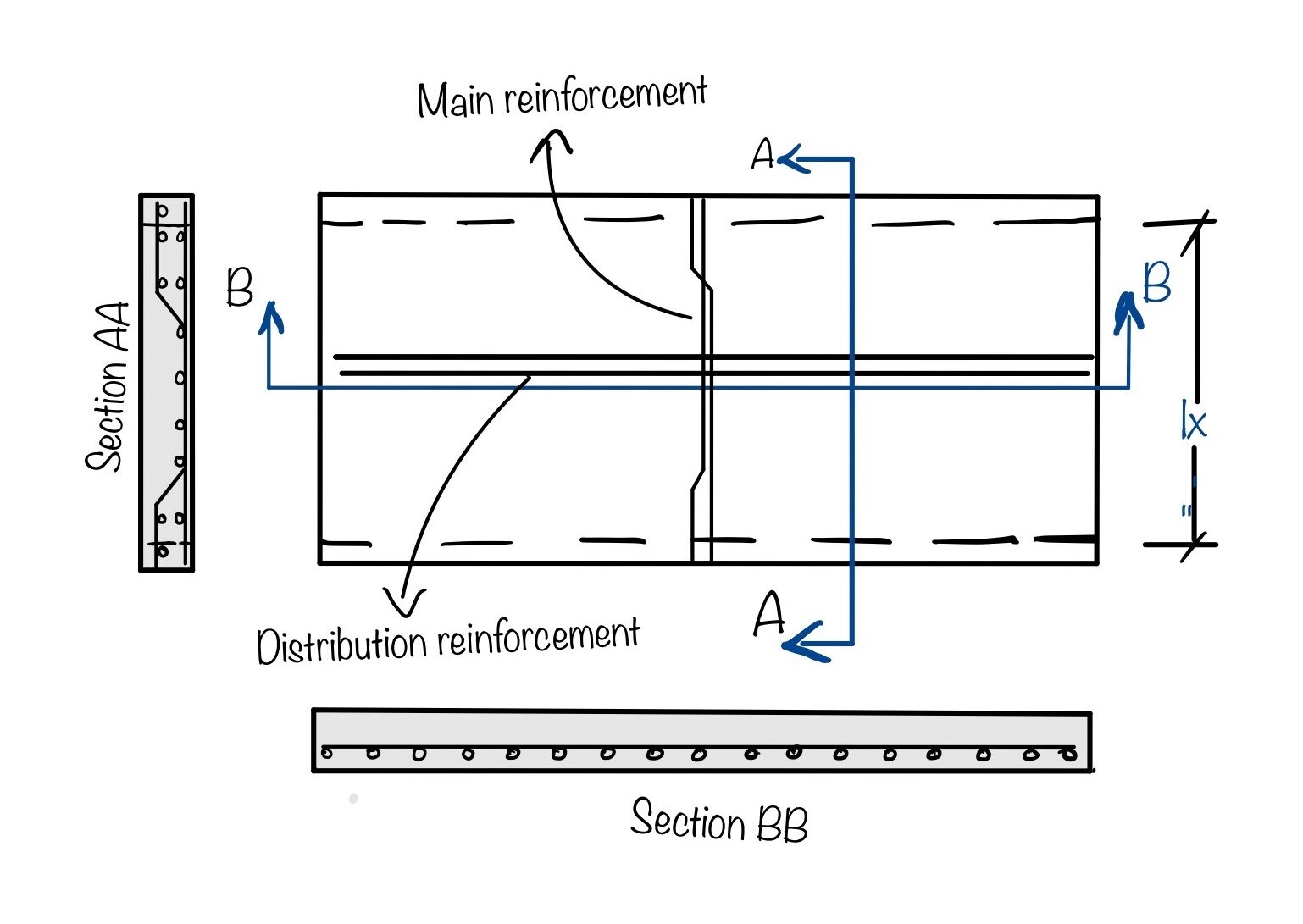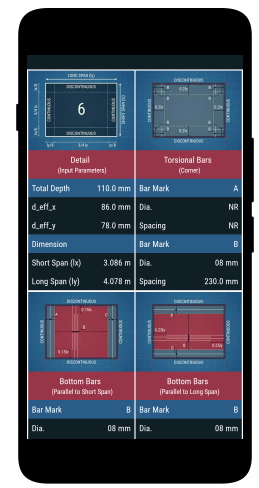Slabs are one of the important structural element of a building. It helps to transfer the various floor loads to the beam, then through columns , last to foundation of structure. In the present scenario, it is very easy to design a one-way slab. As in most of the cases we use some third-party commercial software to design the structure. Even then I believe for a civil engineer it is very much important to be aware of the different steps involved in designing the one-way slab as per the IS specification.
You can check this post to know about one way slab.
Overall, one way slab design is an important aspect of construction, as it provides structural stability, cost savings, efficient use of space, improved aesthetics, and increased safety.
Steps to design a one way slab
The different steps involved in design of a one way slab as per IS 456 2000 are given below:
- Effective span: The effective span of the slab (lx by ly) is calculated as follows
- Assume an effective depth (d) on the basis of span to effective depth ratio (Table 1).
- Then compute the value of overall depth (D).
- Overall depth D = d + clear cover
- Clear cover depends on the exposure condition (for mild exposure, clear cover = 20 mm and for moderate exposure, clear cover = 30 mm ).
- Effective span (l) l = lx + width of support or lx + d —– A lesser of these two
| Type of slab | Span <= 10 m | Span > 10 m |
| Cantilever beam | 7 | deflection should be calculated |
| Simply supported | 20 | 20 x 10 / span |
| Continous beam | 26 | – |
Trial section
Effective depth required
$$d = \frac{\text{Effective span}}{\text{Basic L/d ratio} \times \alpha}$$
The value of $\alpha$ depends on the percentage of reinforcement and steel stress of service load steel. Initially assume percentage of reinforcement pt as per the grade of steel.
- pt= 0.5% to 0.9% for steel of grade Fe250
- pt = 0.25% to 0.45% for steel of grade Fe415
- pt = 0.2% to 0.35% for Fe 500.
Analysis of the slab
In this step the moment of the slab is calculated.
Consider the various loads due to
- Self weight: Self load refers to the weight of the structure itself, including the weight of the material used in construction and any fixtures or furnishings.
- Dead Load: To refer to the permanent and stationary weight of a structure and its components.
- Live load: The temporary or movable loads that a structure or building is prone to during its use or occupancy.
- Total load : Calculate the total load and factored load (1.5 * Total load)
Calculate the bending moment using the formula
$$ M_u = \frac{W_u \times l^2 }{8} $$
Determine the area of reinforcement ( Ast )
- Compute the value of constant R : Compute using $$ R = \frac{M_u}{bd^2}$$
- Compute the value of Ast : Compute the value of Ast using the formula : $$ \frac{p_t}{100} = \frac{A_{st}}{bd} = \frac{f_{ck}}{2 f_y} [1 – (1 – 4.598 \frac{R}{f_{ck}})^{0.5}] $$
- No. of bars: Calculate the number of bars and decide the placements of bars in layers for the main steel.
- Minimum reinforcement: Provide the minimum reinforcement as the distribution steel.
Check as per Indian standards
Check for deflection
Calculate required pt% (maximum value at mid – span of continuous slab or simply supported slab)
If ($p_{t \text{ assumed} }< p_{t \text{ required}} $)
Then the check may be considered to be satisfied else detailed check should be carried out as given in the Code :
Calculate steel stress of service load =fs = 0.58 *fy x ( Ast reqd /Ast provided)
Required depth
d = $\frac{L}{(basic L/d ratio \times \alpha} )$< effective depth provided .
Check for Distribution steel
Required area of steel = 1.2 D for HYSD steel bars., and 1.5 D for Fe250, where D in mm.
The minimum reinforcement in each direction should not be less than 0.15% of the Ast for Fe-250 steel and 0.12% of the Ast for Fe-415 & Fe-500 steel.
The max. spacing of bars should not be more than 3d or 300 mm whichever is smaller for main steel and 5d or 450 mm whichever is smaller for distribution steel.

Conclusions:
In conclusion, the efficient design of one-way slab demands following a step-by-step approach according to IS 456: 2000. The design process involves several key steps, including determining the load capacity, selecting the type of slab, calculating the effective span, and determining the depth of the slab.
In this post you have learned the following points:
- IS codes : Follow the guidelines of IS 456 : 2000 for an efficient design of one way slab.
- Design tool: Following these steps and using the appropriate design tools will result in a safe, reliable, and efficient one-way slab.
- Minimum bar : It should not be less than 0.15% of the Ast for Fe-250 steel and 0.12% of the Ast for Fe-415 & Fe-500 steel.
- Maximum bar : It should not be more than 3d or 300 mm for main steel and 5d or 450 mm for distribution steel.
Slab design
- RCC Slab Design is a free app for designing one way and two way reinforced concrete slab systems as per Indian Standards.
- RCC Design and detailing could be performed for ten different boundary conditions specified in IS456:2000
- Option to save the design projects in local storage.
- Detailed calculation steps presented for verification and validation.

This article was crafted by a group of experts at eigenplus to ensure it adheres to our strict quality standards. The individuals who contributed to this article are:
Author


